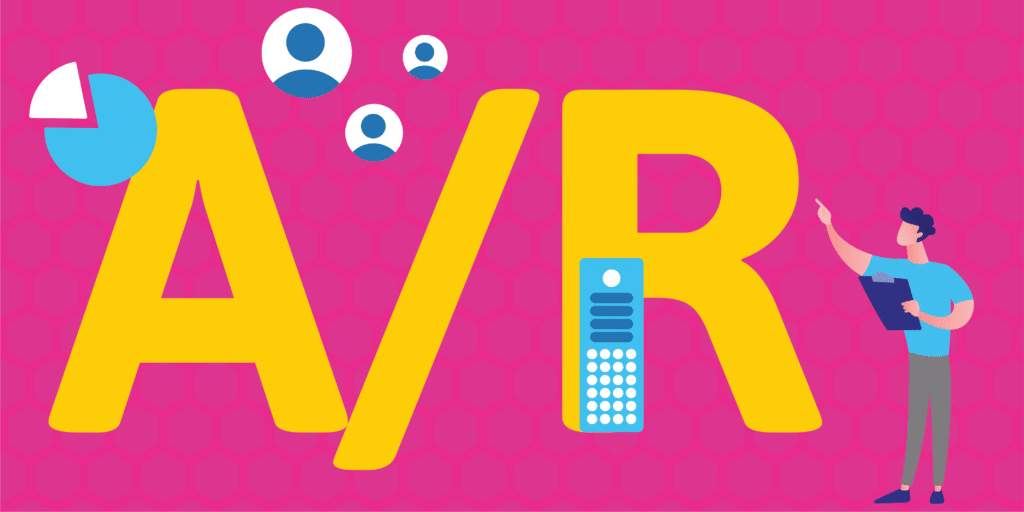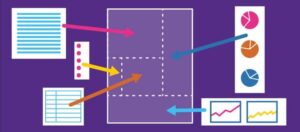Chances are you’ve heard of accounts payable and accounts receivable; you might also be familiar with the term “receivables financing”, but not know exactly what it is or how it works. If that’s the case, you’re in the right place.
To avoid any confusion, let’s start by reviewing some basic accounting terms. Accounts payable is the money that a business owes, usually to its supplier. Accounts receivable is the money a business is owed, usually by its customers.
Receivables financing is when a business gets paid early for invoices they have issued in their accounts receivable. This is often referred to as accounts receivable AR financing, a financial arrangement where businesses can secure funding by leveraging their outstanding invoices. It provides quick access to cash for essential business needs and can be structured in various ways.
In other words, a business’s client has made a purchase but has not yet transferred the money. There will be an invoice connected to the transaction, and based on these types of invoices, a company will have different accounts receivable financing options. Let’s look at an example to help clarify.
An example situation
A business that sells wood to construction companies gets an order for $500,000. The construction company needs supplies immediately, but won’t have the funds to finish paying off the order for six months. The wood business agrees to the terms of the deal, supplies the wood, and issues an invoice for $500,000 to be paid off in six months. Sounds great! But what happens if five other construction companies make similar orders with similar payment terms? If the wood company isn’t making money from its sales until months after the fact, it will run into some serious cash flow issues.
Enter receivables financing!
An invoicing factoring company can look at the invoices in the wood company’s accounts receivable and advance them some of the money they are due to receive so they’re not stuck without cash for months. Once the wood company gets paid by the construction companies, they can repay the factoring company, plus fees. The construction company gets wood, the wood company makes the sale, and the factoring company gets the fees. Everyone is happy.
It is important to note the difference between accounts receivable factoring and accounts receivable financing. Accounts receivable factoring involves selling invoices to a factoring company for immediate cash, whereas accounts receivable financing allows businesses to retain control over their invoices while using them as collateral for a loan.
How accounts receivable financing works
Now that you get the gist of what receivables finance is, let’s dive into how accounts receivable financing work. A company can apply for receivables financing with an invoice factoring company by sending them all of their invoices and any other required documents.
Depending on different factors like the company’s credibility and industry, the lender usually funds some or all of their accounts receivable. The business can then use this money for business expenses like payroll, rent, and other immediate purchases. They will then pay the lender a weekly or monthly fee until the money is fully paid off.
What are the three primary types of invoice factoring?
Asset-based lending
ABL is when a company commits most of its receivables to the lender in exchange for a set business line of credit. This type of receivables financing is usually not very flexible and often has high fees. An accounts receivable loan is another type of financial product where businesses can borrow money against their outstanding invoices, allowing them to receive cash advances based on their accounts receivable balances. These loans can be either secured or unsecured, providing flexibility in financing without selling the invoices.
Traditional factoring
Traditional factoring is when a business receives early payment for less than the full amount of invoices in their accounts receivable minus fees. This type of receivable finance is usually more flexible than ABL but can also have high fees.
Selective receivables finance
The most flexible of the three, selective receivables finance allows businesses to choose which of their receivables they would like to get paid early for. Unlike the other two types, selective receivables finance is not recorded on the balance sheet, meaning it does not have an impact on a company’s debt or credit.
The benefits of receivables finance
Receivables financing is a great way for businesses to get funds without having to pursue more complicated routes like loans. Businesses don’t have time to wait and receivables finance is a solution to getting cash fast. By leveraging their unpaid invoices, businesses can receive advances based on a percentage of the invoice value, enabling them to access immediate funds.
Creditworthiness and accounts receivable
Creditworthiness is key to the terms and costs of receivables financing. When a business applies for this type of financing, the factoring company will look at the business’s credit profile and its customers’ creditworthiness. A good credit history and solid customer base will get you lower fees, better advance rates, and better overall terms. If a business or its customers have bad credit, the financing company will charge higher fees, worse terms, or more stringent repayment conditions.
Creditworthiness also affects the amount of funding a business can get. Businesses with high credit scores and a good history of managing their finances will get higher advance rates, meaning they can get more of their receivables upfront. Businesses with lower credit scores will only get a smaller portion of their receivables as an advance.
Also note that receivables financing companies are very interested in the payment history and reliability of a business’s customers. If a business has a customer base that pays invoices on time, this can make the financing deal more attractive.
Lenders will be more willing to give better terms knowing the risk of non-payment is lower. So maintaining good relationships with customers and getting invoices paid on time can help you get and benefit from receivables financing. Leveraging unpaid invoices as collateral can convert outstanding debts into accessible cash for operational needs or investments.
In short, your business and customer creditworthiness is the key to the success and cost of receivables financing. Get your credit profile in order and work with good customers, and you’ll get the funding you need at the lowest cost and risk.
Risks of receivables financing
While receivables financing gets you cash quick, you need to understand the risks. One of the biggest risks is relying on customers to pay their invoices on time. If your customers delay or default, it can disrupt your cash flow and put pressure on your finances and potentially higher costs from ongoing factoring fees.
For example, a manufacturing company uses receivables financing to fund their operational costs. If several of their big customers delay payments, they may struggle to meet their financial obligations and the accumulated fees from the financing will eat into their profit margins.
Receivable loans, which allow companies to borrow against their accounts receivable, also come with potential risks. Over-reliance on receivable loans can reduce profitability, especially if the factoring fees are high.
This can be tough for businesses with thin margins as the cost of financing can outweigh the benefits of quick cash. Businesses need to carefully consider these risks and have a plan in place to manage potential delays in customer payments and financing costs.
Lastly, make sure you have strong relationships with your customers and they understand the importance of prompt payments as this will directly impact your receivables financing strategy.
Industry Use Cases for Receivable Financing Companies
Receivables financing is most popular in industries with long payment terms or large receivables such as manufacturing, construction and wholesale. These industries have big upfront costs and delayed payments so receivables financing is the perfect solution to bridge the gap between invoicing and payment. Accounts receivable financing companies play a crucial role in these industries by providing quick access to funding based on outstanding invoices, thus improving cash flow. By turning outstanding invoices into cash today, businesses in these industries can keep running without waiting for customer payments.
Receivables Financing vs Traditional Loans
Receivables financing is a flexible quick alternative to traditional loans. Unlike loans which have long approval processes and create long term debt, receivables financing gives you immediate access to cash without adding debt to your balance sheet. This is perfect for businesses that need short term liquidity without the hassle of monthly loan repayments. But you need to compare the costs and benefits of both to decide which one is best for your business. When considering accounts receivable financing vs accounts receivable factoring, it’s important to understand that while both provide immediate cash, they differ in terms of invoice ownership and payment collection responsibilities.



























